Seismic selfies: Massive earthquake surface rupture becomes tourist attraction
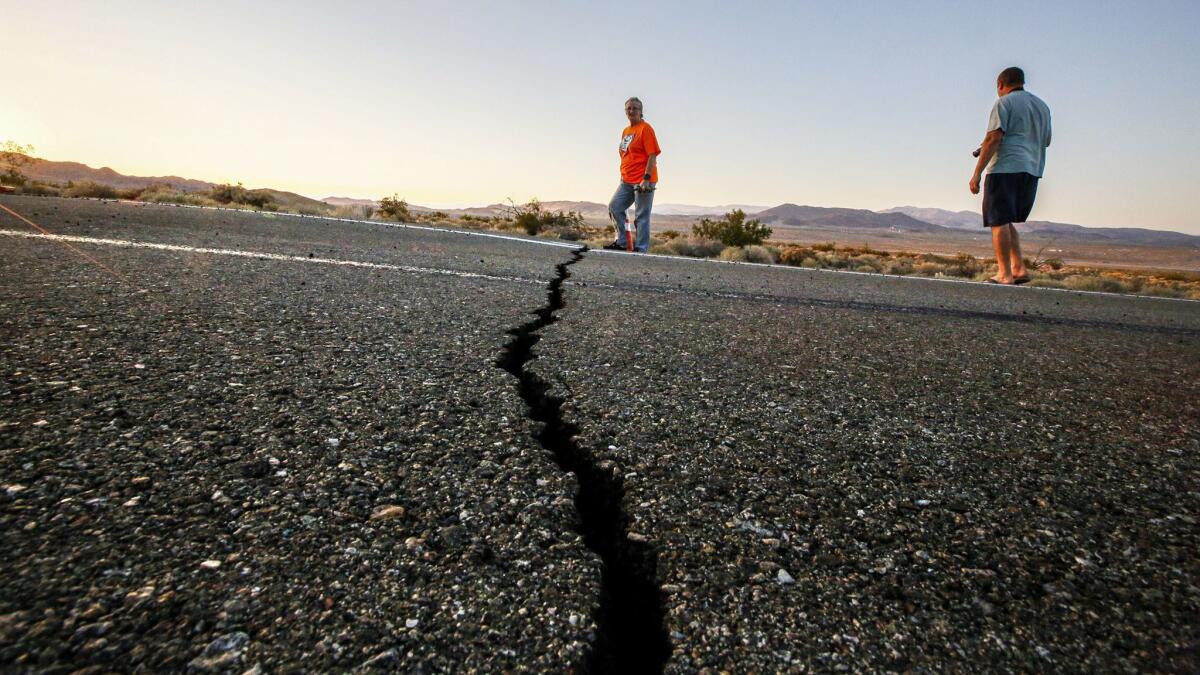
Reporting from Ridgecrest, Calif. — Christian Flores had traveled more than 200 miles, from San Diego to the Mojave Desert, to visit the latest Southern California tourist attraction.
There it was, on the hot asphalt of Highway 178 between Ridgecrest and Trona: a gnarly, surprisingly wide scar, courtesy of one very large earthquake. And just a few miles down the road lay another one — caused by a second, even larger and more terrifying quake.
Flores couldn’t wait to upload what he saw on his YouTube channel.
Since the Fourth of July, tourists, geologists and students have converged on the once-desolate spot from far and wide, to see the ruptures on Highway 178 caused by last week’s magnitude 6.4 and 7.1 earthquakes. The Grand Canyon this is not — but the cracks were sizable enough to make visitors gape.
Trucks, minivans and sedans slowed down to park on the gravel lining the side of the highway. Families with young children hopped out. Researchers with GPS devices set up their machinery. Others ventured into the brown shrubbery as they followed the surface ruptures into hilly terrain.
They held cameras and shot selfies in the middle of the road.
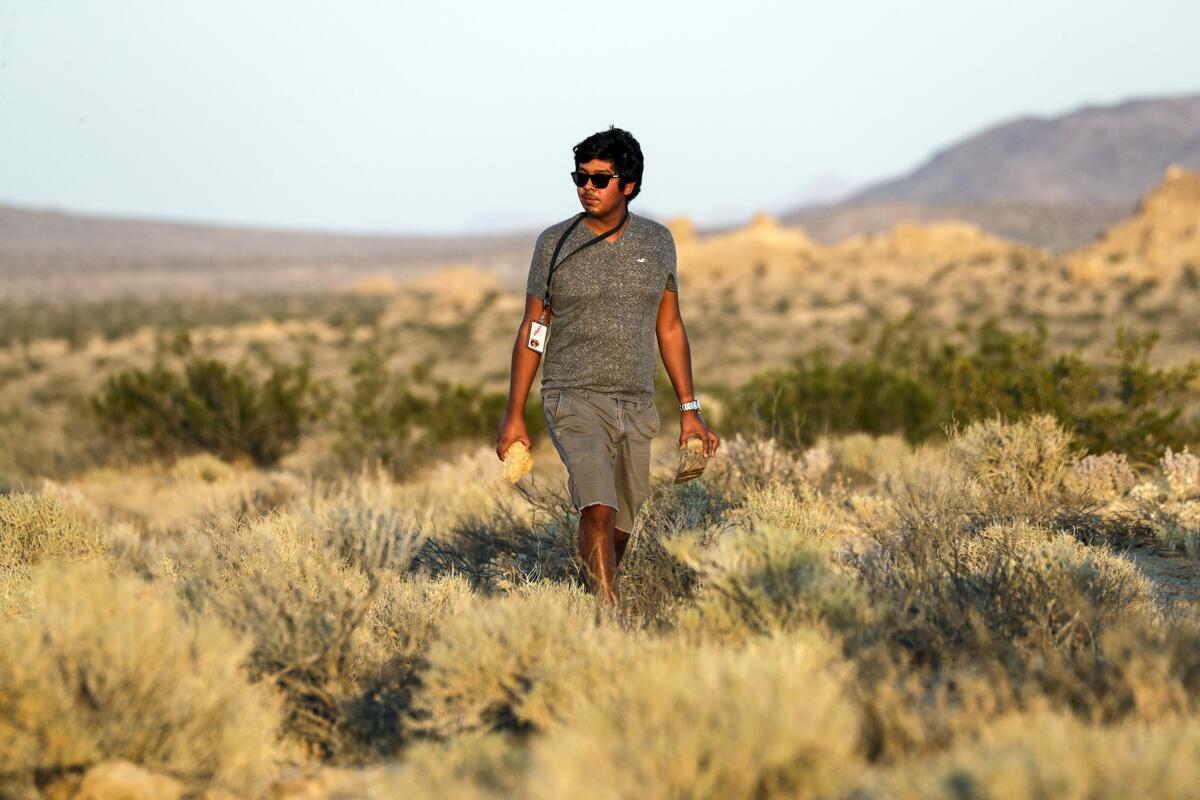
“I thought it would fare well online,” Flores, 27, said of the cracks as the early evening sun descended over the mountains. “I mean, how often do you get an earthquake of this size?”
Flores picked up rocks he had found on the surface rupture as souvenirs and placed them gently in the back of his car trunk.
As a dust devil whirled, Michelle Binion, 56, marveled at the rupture caused by the first quake. She had driven with her husband to the area from Rancho Cucamonga, determined to see the evidence of nature’s power.
“This is absolutely worth the drive,” she said with a smile. “I think as human beings we like to live on the edge. This fault really shows you just how vulnerable we are.”
Some of the cracks traveled across the highway and into the desert landscape on either side.
It has been about 20 years since scientists have seen a quake of this magnitude in California, said Cynthia Pridmore of the California Earthquake Clearinghouse — a website where experts and quake novices can share their observations.
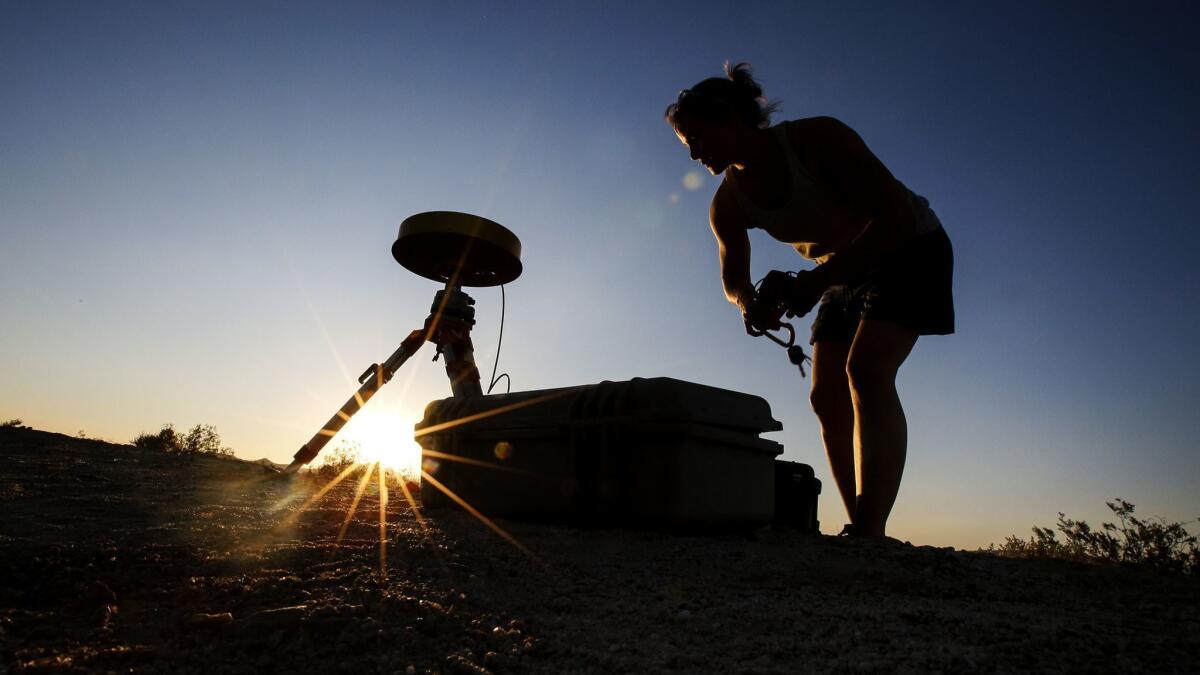
The clearinghouse has heard from researchers who believe that the most notable surface rupture discovered so far — caused by the 7.1 quake that hit Friday — could measure about 28 miles in length. But that won’t be known until U.S. Geological Survey and California Geological Survey scientists who have access to the Naval Air Weapons Station at China Lake report back.
In the meantime, sightseers have been posting on social media. Geologists have been studying the cracks on the road. Others have hiked into the desert to follow the snake-like, zigzag path.
The fault ruptures have enthralled residents of the communities rocked over the last few days and those who have traveled from across California.
On the road, at least, the giant cracks won’t last.
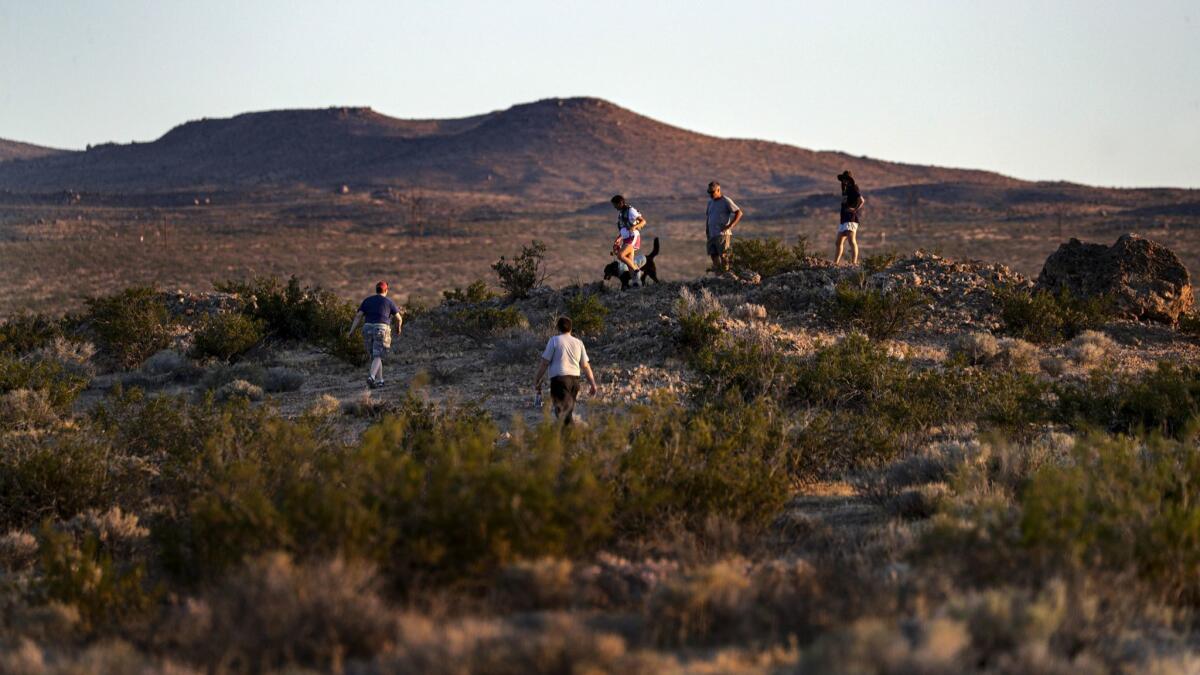
By Sunday afternoon, the smell of tar permeated the area as workers labored to repair them. But construction crews and the closure of one of Highway 178’s two lanes did not deter people from showing up.
Ashley Hulett, who studied geology at Cal State San Bernardino, came with two friends.
“This one is significant, it traces longer than the first one,” she said as she pointed at one crack.
“We lost the first rupture four to five hundred feet down, but this second one goes over that ridge,” Hulett said, gesturing away from the road.
The large surface rupture caused by the 7.1 earthquake resulted when the ground in the area shifted significantly, both vertically and horizontally. Researchers are not sure yet which of the faults in the Little Lake Fault Zone caused the earth to move, Pridmore said.
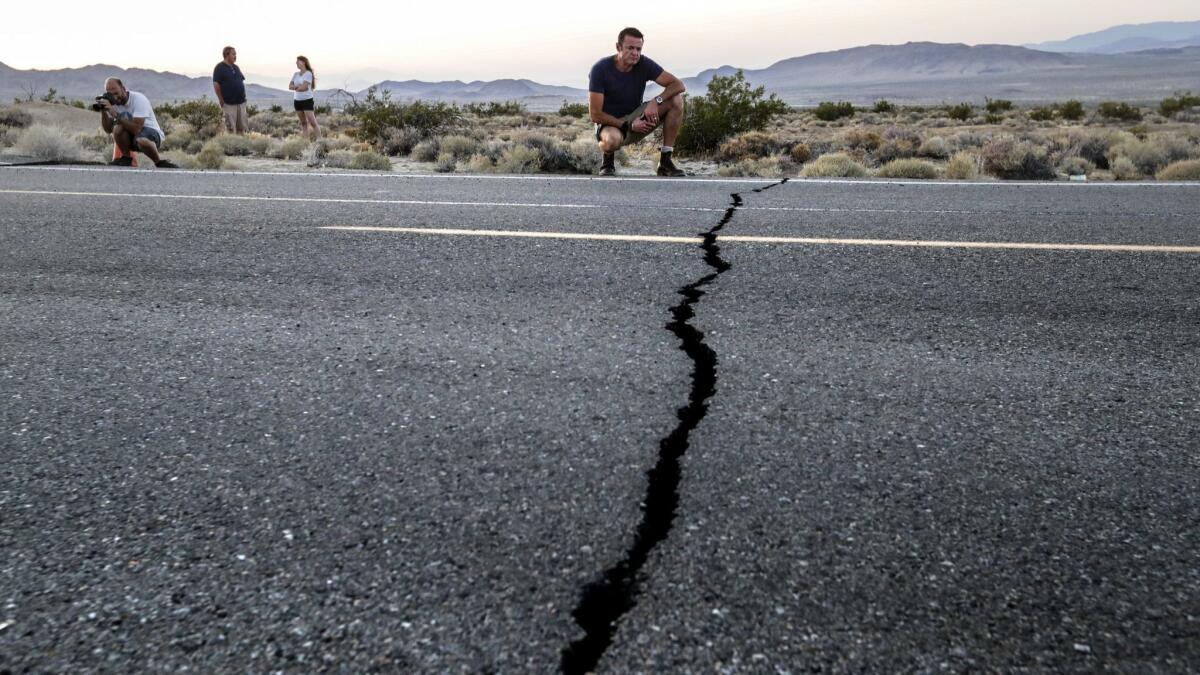
Dressed in brown boots, khaki shorts and a navy shirt, Heath Williamson showed up looking a little like the late “crocodile hunter,” Steve Irwin.
The Australia native took a video of himself as he crouched low over the fault in the middle of the road, narrating rapidly while pointing the lens of his phone’s camera at the crack on the highway.
He posted the videos on Facebook and Instagram, he said, so that family and friends could see them.
“Mother Nature, she is just an amazing force,” Williamson said after he was done with his social media escapade.
The 47-year-old from Brisbane said he had spent the last 10 years traveling between Australia and California for work. On Saturday, he was on his way to Reno and decided to take a detour to see what the earthquake damage looked like.
“This is wild country, it’s so intriguing,” he said.
As he stood on the road, Williamson wondered whether people in the Golden State truly appreciated the threat of a major earthquake. He insisted he came here not only out of curiosity, but also to spread a little bit of knowledge — through social media — about the might of earthquakes.
“California is like a second home to me,” Williamson said. “I’m worried that Los Angeles has become very complacent.”
More to Read
Sign up for Essential California
The most important California stories and recommendations in your inbox every morning.
You may occasionally receive promotional content from the Los Angeles Times.










